Biosafety Environment

How do biosafety policies impact the research and development of new drugs and vaccines ?
Biosafety policies play a crucial role in drug and vaccine development by promoting safety, protecting public health, preserving the environment, and fostering scientific progress. These policies provide guidelines for handling hazardous materials, maintaining a clean laboratory environment, and preventing accidental exposure or contamination. By adhering to these standards, researchers can work more safely and effectively, reducing the risk of accidents or injuries that could slow down or halt their work. Additionally, biosafety policies help protect public health during clinical trials, minimize the risk of adverse reactions or side effects, and ensure that any new drugs or vaccines are safe before they reach the market. Biosafety policies also govern the disposal of hazardous waste materials and prevent accidental spills or releases of dangerous substances, protecting the environment from long-lasting harm. Finally, these policies promote collaboration and information sharing among researchers, leading to faster and more efficient drug and vaccine development while ensuring that research findings are reliable and reproducible.

What are the potential consequences of not having adequate biosafety policies in place ?
Biosafety policies are crucial for handling and containing biological materials safely. Inadequate biosafety measures can lead to direct and indirect exposure to pathogens, spread of disease, environmental contamination, legal and ethical issues, and economic impacts. It is vital for institutions and researchers to prioritize biosafety measures to protect human health, the environment, and society.

How do biosafety policies differ across countries and regions ?
Biosafety policies are crucial for protecting public health and the environment from potential risks associated with biotechnology. These policies vary significantly across countries and regions due to differences in regulatory frameworks, cultural values, economic resources, and technological advancements. The United States has a well-established regulatory framework for biosafety, while the European Union has a strict regulatory framework. In Asia, China and India have relatively new biosafety laws. Cultural values also play a significant role in shaping biosafety policies across countries and regions. Economic resources can impact the implementation and enforcement of biosafety policies, and technological advancements can introduce new challenges and opportunities.

How can we ensure biosafety in laboratories and research facilities ?
Ensuring Biosafety in Laboratories and Research Facilities: Biosafety is a critical aspect of any laboratory or research facility that deals with potentially hazardous biological materials. It involves implementing measures to prevent the exposure of personnel, the public, and the environment to these materials. Here are some ways to ensure biosafety in laboratories and research facilities: 1\. Establish clear policies and procedures, including creating a biosafety manual, providing training and education, and developing an emergency response plan. 2\. Maintain appropriate laboratory design and equipment, such as using physical barriers, ventilation systems, and decontamination areas. 3\. Practice good laboratory techniques, including using personal protective equipment (PPE), aseptic techniques, and proper waste management. 4\. Conduct risk assessments and implement controls, such as identifying potential hazards, evaluating the likelihood and severity of each identified hazard, and implementing appropriate administrative, engineering, and work practice controls. 5\. Monitor and review biosafety practices regularly, including conducting regular audits, encouraging feedback mechanisms, and continuously improving policies and procedures based on new information, technologies, or changes in the work environment.

What are the key principles of biosafety management ?
Biosafety management is a set of practices and procedures designed to minimize the potential risks associated with handling biological materials in research, clinical, and industrial settings. The key principles of biosafety management include risk assessment, facility design and engineering controls, personal protective equipment (PPE), standard microbiological practices (SMP), training and education, and incident response plans. Risk assessment involves identifying and evaluating potential hazards associated with working with biological materials, including assessing the risk of exposure to pathogens, toxins, and other harmful substances. Proper facility design and engineering controls are essential for effective biosafety management, including designing laboratory spaces that minimize the risk of exposure to hazardous materials and implementing appropriate ventilation systems. Wearing appropriate personal protective equipment (PPE) is crucial for protecting workers from exposure to hazardous materials. Standard microbiological practices (SMP) are essential for maintaining a safe working environment when handling biological materials. Training and education are critical components of biosafety management, and all personnel who work with biological materials must receive appropriate training on biosafety practices. Having an incident response plan in place is essential for managing accidents or spills involving hazardous materials.

What role does public health play in the implementation of biosafety policies ?
Public health is crucial for implementing biosafety policies, which aim to contain and manage biological agents that may pose a risk to human health, animal health, or the environment. Public health professionals play key roles in surveillance and disease detection, risk assessment and management, laboratory biosafety, vaccination programs, public education and awareness, policy development and implementation, emergency response, and international collaboration. By monitoring disease trends, assessing risks, maintaining laboratory safety, promoting vaccination, educating the public, developing policies, responding to emergencies, and collaborating internationally, public health professionals help protect individuals and communities from biological hazards.

Can you provide examples of successful biosafety policies and their impact on public health ?
Biosafety policies are crucial for protecting public health by preventing the release of hazardous biological agents into the environment. Successful biosafety policies include Institutional Biosafety Committees (IBCs), biosecurity measures in laboratories, and vaccine safety monitoring. These policies help reduce risks associated with hazardous materials, prevent bioterrorism, maintain public trust, and enhance vaccine safety. Overall, successful biosafety policies play a vital role in protecting public health.

What are the different levels of biosafety containment and when should they be used ?
Biosafety containment levels are measures taken to isolate hazardous biological agents in labs and research facilities. These range from 1 (low risk) to 4 (high risk), with each level indicating the severity of the risk associated with the agent and the corresponding safety measures required to handle it. Examples include most microorganisms used in teaching labs (BSL-1), human pathogens like Salmonella (BSL-2), Mycobacterium tuberculosis (BSL-3), and Ebola virus (BSL-4). The appropriate biosafety containment level should be determined based on a risk assessment of the biological agent being handled, taking into account factors such as pathogenicity, mode of transmission, availability of effective treatments or vaccines, and potential impact on public health.

How do biosafety policies evolve in response to emerging infectious diseases and pandemics ?
Biosafety policies are evolving in response to emerging infectious diseases and pandemics. The evolution is driven by scientific advancements, global health initiatives, and lessons from past outbreaks. Key factors driving this evolution include: - Scientific advancements such as research and development and genomic sequencing. - Global health initiatives like international collaboration and surveillance systems. - Lessons learned from past outbreaks, leading to review and revision of policies and the adoption of best practices. Examples of evolved biosafety policies include: - Laboratory biosafety with clear classification systems (BSL) and standard operating procedures (SOPs). - Public health measures such as infection prevention and control (IPC) and vaccination programs. - Travel restrictions and quarantine measures like entry screening and quarantine regulations. - International regulations and agreements, including the Biological Weapons Convention (BWC) and the Global Health Security Agenda (GHSA). The continuous evolution of biosafety policies is crucial for managing risks associated with biological agents and protecting public health.
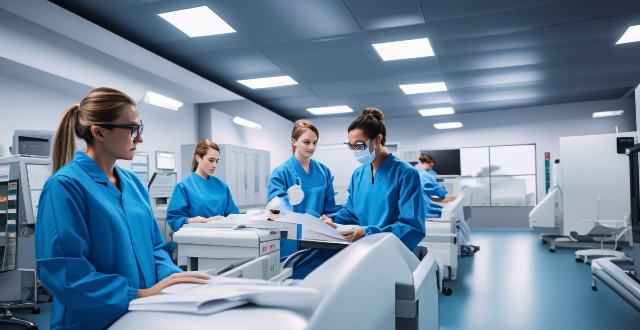
How can biosafety be improved in healthcare facilities ?
Improving biosafety in healthcare facilities involves implementing clear policies, using advanced technology, and creating a culture of safety. Specific strategies include developing SOPs, regular training, designated biohazard areas, infection control measures, surveillance, waste management, emergency response planning, encouraging reporting, leadership support, and staying updated with scientific advancements.

What are the key components of an effective biosafety policy ?
An effective biosafety policy is crucial for any organization that handles biological materials. It ensures the safety of personnel, the environment, and the public by minimizing risks associated with biological agents. Key components of an effective biosafety policy include: introduction, responsibilities, hazard identification and risk assessment, biosafety levels, engineering controls, administrative controls, personal protective equipment (PPE), waste management, incident response plan, and review and updates. Incorporating these key components into your biosafety policy can create a comprehensive framework that ensures the safe handling of biological materials and protects the health and safety of your employees and the environment.
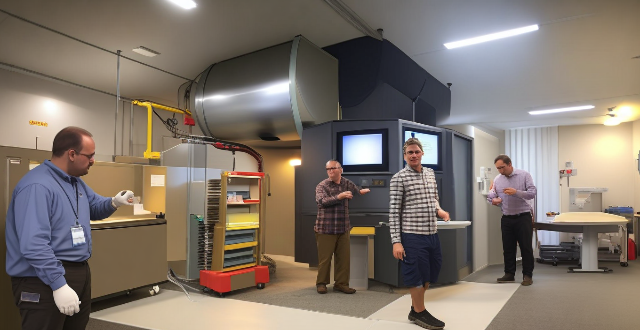
Can you explain the difference between biosafety levels 1-4 ?
Biosafety Levels (BSL) are guidelines for handling hazardous biological agents, with four levels of increasing risk and safety measures. BSL-1 is for non-pathogenic organisms, BSL-2 for moderate risk agents, BSL-3 for serious disease-causing agents, and BSL-4 for highly dangerous agents like Ebola. Differences include lab design, access control, safety equipment, and procedures to protect personnel and the environment.
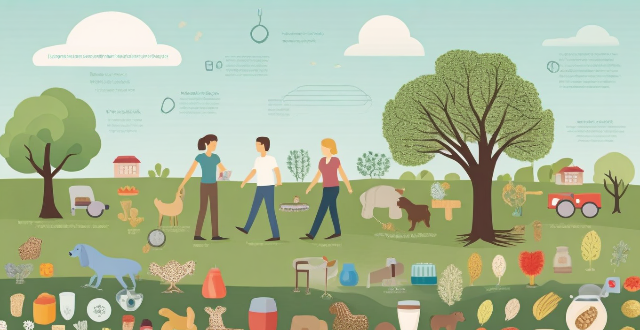
What are the potential risks associated with biosafety breaches ?
Biosafety breaches pose significant risks to human health, the environment, and biodiversity. These risks include infection through direct exposure or aerosol transmission, toxicity from microorganism-produced toxins, allergies, ecosystem disruption, biodiversity loss, genetic exchange, agricultural impacts, trade and travel restrictions, public fear, liability and compensation issues, and ethical concerns regarding genetically modified organisms. Facilities handling hazardous biological materials must implement strict safety measures to prevent these incidents.
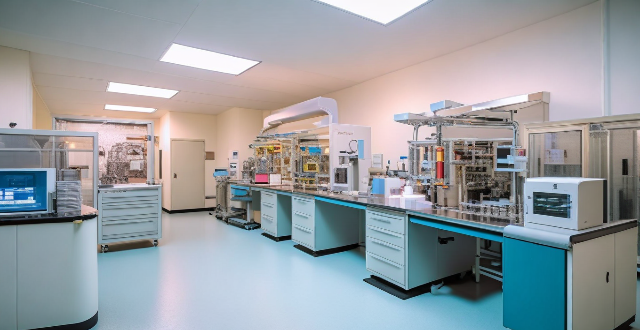
What measures should be taken to ensure compliance with biosafety policies in laboratories and research facilities ?
Ensuring biosafety compliance in laboratories and research facilities is crucial for the protection of personnel, the environment, and research subjects. Measures such as regular training sessions, competency assessments, clear policies and procedures, proper use of personal protective equipment (PPE), effective waste management, and well-developed emergency response plans should be implemented to create a safe working environment.
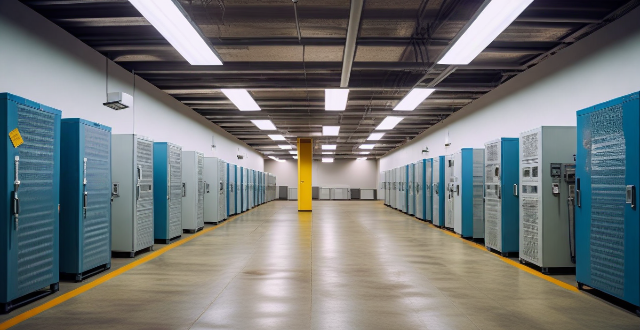
How can biosafety be maintained during transportation of biological materials ?
Transporting biological materials requires adherence to biosafety protocols, including compliance with regulations, proper packaging, temperature control, security measures, training of personnel, incident response planning, and waste management. Following these guidelines ensures the safety of all parties involved and prevents contamination or harm to individuals and the environment.

How do biosafety policies address the risk of accidental or intentional release of harmful biological agents ?
Biosafety policies are comprehensive measures designed to manage the risks associated with accidental or intentional releases of harmful biological agents. These include: 1. **Biosafety Levels**: Four tiers of guidelines for handling different risk groups of microorganisms, each with specific facility, equipment, and training requirements. 2. **Laboratory Procedures**: Strict adherence to safety procedures using engineering controls, personal protective equipment, standard microbiological practices, and waste management protocols. 3. **Regulations and Compliance**: Government laws and regulations ensuring safe handling through transportation guidelines, facility registration, reporting requirements, and oversight by agencies like the CDC. 4. **Training and Education**: Regular sessions on biosafety practices, emergency response, and continuous learning to keep personnel updated. 5. **Incident Response Plans**: Preparedness for incidents through emergency response teams, decontamination procedures, medical treatment, and communication strategies. By addressing these aspects diligently, biosafety policies aim to minimize the risk of accidental or intentional release of harmful biological agents.

What role do personal protective equipment (PPE) play in maintaining biosafety ?
PPE is vital for maintaining biosafety by preventing exposure to harmful biological agents, reducing contamination, complying with regulations, and promoting safety awareness. Types of PPE include physical barriers like gloves and gowns, eye and face protection, respiratory protection, and head protection. Best practices involve ensuring proper fit, following correct donning and doffing procedures, replacing damaged or contaminated PPE, storing it properly, and regularly inspecting it for wear or damage.

How do human activities impact the environment and what ethical responsibilities do we have ?
Summary: Human activities such as pollution, deforestation, overfishing, and climate change have a significant negative impact on the environment. To fulfill our ethical responsibility towards the environment, we should reduce, reuse, recycle, support sustainable practices, advocate for environmental protection, and educate others about the importance of preserving the planet for future generations.

How does a Series Hybrid Electric Vehicle impact the environment ?
Series hybrid electric vehicles (SHEVs) have a positive impact on the environment through reduced emissions and improved fuel efficiency. However, challenges such as battery production and waste management must be addressed to maximize their environmental benefits. The overall impact also depends on factors like the source of electricity for charging and vehicle design efficiency.

How does climate change affect children's rights to a healthy environment ?
This article explores the impact of climate change on children's right to a healthy environment, highlighting various health, nutritional, psychological, and educational implications. It emphasizes that addressing climate change is crucial for safeguarding children's rights and future well-being.

How does electronic waste affect the environment if not recycled ?
Electronic waste, or e-waste, refers to discarded electronic devices such as computers, smartphones, and televisions. Improper disposal of these items can have severe consequences for the environment, including the release of toxic chemicals into soil, water, and air. These chemicals can cause health problems for both humans and wildlife. Non-recycled e-waste also occupies valuable landfill space and contributes to soil contamination, water pollution, and air pollution. Proper recycling of electronic waste is essential to protect the environment and human health, conserve natural resources, and minimize the impact on landfills.

How can I create an environment that encourages creative expression ?
Creating an environment that encourages creative expression is essential for fostering innovation, personal growth, and problem-solving skills. Here are some tips on how to create such an environment: 1. Set the tone by making everyone feel comfortable sharing their ideas and opinions without fear of judgment or criticism. 2. Provide opportunities for self-expression through various forms of media, such as writing, drawing, music, or dance. 3. Foster collaboration by encouraging teamwork and brainstorming sessions where everyone feels valued and heard. 4. Create a safe space where people feel comfortable taking risks and making mistakes. 5. Offer incentives and recognition to motivate individuals to continue exploring their imagination. 6. Provide resources and tools that support creative expression, such as art supplies, software, or access to workshops and training programs. 7. Encourage time for reflection and inspiration by providing regular breaks, mindfulness exercises, or a quiet space for contemplation. 8. Promote diversity and inclusion to encourage different perspectives and ideas, leading to more creative solutions.

What is the optimal environment for studying effectively at home ?
The provided text offers a comprehensive guide on creating an optimal study environment at home. It emphasizes the importance of choosing a quiet area with comfortable seating and adequate lighting. The text suggests keeping the study area clean, clutter-free, and properly organized with essential materials within reach. It also recommends minimizing distractions by controlling electronics, using do not disturb signs, and scheduling short breaks. Personalizing the space with motivational decor, personal touches, and maintaining a comfortable temperature is also advised. Overall, the text aims to help readers create a conducive study environment that enhances focus and productivity.

How does PPE contribute to creating a safe work environment ?
PPE's Role in Creating a Safe Work Environment Personal Protective Equipment (PPE) is vital for establishing a safe work environment by providing a physical barrier between workers and potential hazards, reducing the risk of injuries and illnesses. PPE contributes to safety in various ways, including preventing direct contact with hazardous substances, reducing exposure to harmful agents, providing physical support and protection, enhancing visibility and awareness, promoting compliance with regulations, encouraging responsible behavior, and contributing to ergonomic well-being. By implementing and maintaining the use of PPE, employers can significantly reduce the number of work-related injuries and illnesses, creating a safer and more secure work environment for all employees.

How can parents create a positive learning environment through home teaching strategies ?
Creating a positive learning environment at home is crucial for children's academic success and overall well-being. Here are some strategies parents can use to foster such an atmosphere: 1. Establish a dedicated learning space that is quiet, organized, and comfortable. 2. Set clear expectations and goals with your child, and celebrate their achievements to boost confidence and motivation. 3. Foster a love for learning by encouraging curiosity, introducing new materials, and leading by example. 4. Provide support and encouragement by offering help when needed, praising effort over outcomes, and fostering a growth mindset. By implementing these strategies, parents can create a positive learning environment that encourages curiosity, exploration, and continuous growth for their children.

Is it ethical to continue using fossil fuels given their negative impact on the environment ?
The text discusses the ethical implications of continuing to use fossil fuels given their negative impact on the environment. It highlights the harmful pollutants released by burning fossil fuels, including carbon dioxide, sulfur dioxide, nitrogen oxides, and particulate matter. These pollutants contribute to global warming, acid rain, and air pollution, which have negative effects on human health, biodiversity, and the environment. The text suggests that we have a moral obligation to protect the environment for future generations and raises questions about environmental justice and equity. However, some argue that transitioning away from fossil fuels would be too costly and disruptive to economies around the world. The text also explores alternatives to fossil fuels, such as solar power, wind power, hydropower, geothermal energy, and biomass. In conclusion, the text argues that it is ethically questionable to continue using fossil fuels as our primary source of energy and that we should focus on developing and implementing cleaner, renewable sources of energy to mitigate our impact on the environment.

How do scientists use climate models to study the impact of human activities on the environment ?
Climate models are mathematical tools used to simulate the Earth's climate system and study the impact of human activities on the environment. The process involves data collection, model construction, scenario analysis, prediction and projection, and continuous validation and refinement. These models help policymakers make informed decisions about reducing greenhouse gas emissions and adapting to climate change.
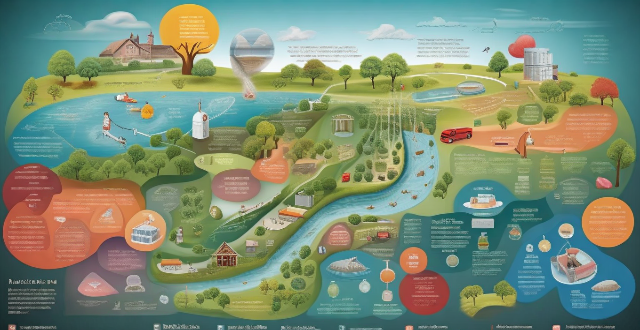
How does climate data analysis aid in understanding the impact of human activities on the environment ?
Climate data analysis aids in understanding the impact of human activities on the environment by identifying climate change indicators, analyzing atmospheric composition, monitoring land use changes, assessing water resources, and evaluating energy consumption. By collecting and analyzing various types of climate data, scientists can identify patterns and trends that help them understand how human activities are affecting the planet. This information is critical for developing strategies to mitigate the negative impacts of human activities on the environment and promote sustainable development.

How can I create a safe and stimulating home environment for my child's early years ?
Creating a safe and stimulating home environment for your child's early years is crucial. Here are tips to achieve this: **Safety First**: Childproof the house, prevent falls, supervise children, and have an emergency plan in place. **Stimulating Environment**: Offer a variety of toys, reading materials, art supplies, music, dance, and nature exposure. **Emotional Support**: Use positive reinforcement, maintain routine, spend quality time, and model positive behavior. **Cognitive Development**: Introduce problem-solving games, encourage curiosity, teach math concepts, and promote language development. **Physical Health**: Provide a balanced diet, encourage physical activity, and establish healthy sleep habits.